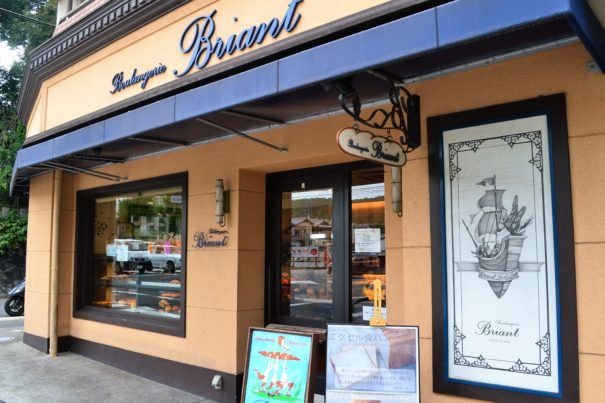
A Bread‑Lover’s Guide to Japan

A Bread‑Lover’s Guide to Japan
Croissants in Kyoto
I love Japanese food. Sushi and sashimi, ramen and donburi, okonomiyaki and yakisoba; bring it all and I am more than happy to wolf it down, with a glass of sake, of course. But rice, miso soup, and grilled fish for breakfast don’t quite do it for me. In Tokyo, we mostly skipped breakfast and went for brunch; in Osaka, I attempted to eat supermarket sushi for breakfast but ended up cooking scrambled eggs at my Airbnb. In Kyoto, I found my breakfast groove.
A quick walk away from our Airbnb stay near Hirano shrine stood Boulangerie Briant. The morning after our first night in Kyoto, as we were walking down to the bus stop, the aroma of fresh bread pulled us towards it; shelves stocked with a variety of breads invited us in. Inside, it looked like bread heaven—whole-wheat loaves, baguettes, croissants, sourdoughs, and bagels called out to us. And then there was a range of Danishes, and mini-pizzas stuffed or topped with cheese, sausages, tomato, strawberries, and custard. We picked up croissants and tomato-and-cheese-topped mini-pizza and chomped it down, standing on the sidewalk.
While exploring the city we come across many of these French bakeries, for which Japan is famous. Like in India, the Portuguese introduced bread to Japan in the 16th century, and Japan adapted it as pan, derived from pao. Post-World War II, when rice was scarce, bread became a staple. However, back then, when American occupation authorities were making cheap, unpalatable bread, the Japanese didn’t regard it favorably. In the mid-20th century the Japanese started making and consuming their own versions, and it took another couple of decades for bakers to introduce the concept of “real,” artisan breads.
Breads replaced the traditional Japanese breakfast, which was more tedious to prepare. Soon, breakfast tables were filled with shokupan—plain, white, sliced bread; anpan—sweetened bread roll stuffed with anko, a sweetened red bean paste, which was also the first bread that was made to suit the Japanese palate; melonpan—a sweet roll with a crumbly cookie-like surface; and tonkatsu sando—a sandwich made with shokupan and crispy fried-pork cutlet.
After we found Boulangerie Briant, our next three mornings played on repeat: wake up, brisk walk to the bakery, pick up bread, come back, eat a breakfast of croissants and coffee. The rest of the day was planned only once we’d wiped off the last morsel of those soft, fluffy, buttery pastries and the last drop of our instant coffee.